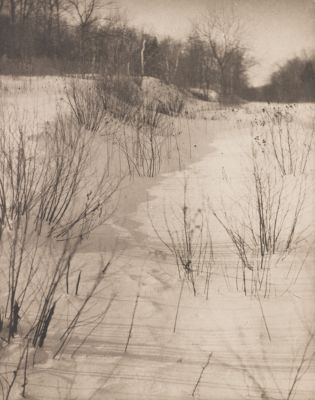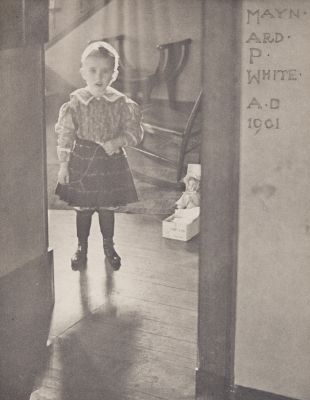
Title
Indian ChiefArtist
Kasebier, Gertrude (American, 1852-1934)Publication
Camera Notes Vol. 6 No. 1Date
1902Process
PhotogravureAtelier
Photochrome Engraving Company, New YorkImage Size
16 x 12.6 cm
Gertrude Käsebier helped shape the field of photography as a fine art around the turn of the twentieth century. Widely published, her work received acclaim from art notables such as Alfred Stieglitz and Auguste Rodin. Her lesser known works are of Lakota (Sioux) "Show Indians" from Buffalo Bill’s Wild West when they came through New York City in April 1898. The nine men included in the initial studio visit were Chief Iron Tail, High Heron, Has-No-Horses, Samuel Lone Bear, Joseph Black Fox, Red Horn Bull, Shooting Pieces, Phillip Standing Soldier, and Kills-Close-to-the-Lodge.
Käsebier’s photographs of the "Show Indians" led to the creation of what is arguably the most respected set of images produced during her career. The portraits were selectively, and infrequently, exhibited and reproduced in contemporary journals. While Käsebier received some of the highest prices in the nation for photographic work, she often gave away the Sioux portraits to those individuals expressing a genuine interest in and appreciation for Native American culture.
It is not clear from interviews or family records exactly how many prints were produced from negatives made between 1898 and 1912. The largest and most comprehensive selection of these photographs, more than 100, along with the 14 drawings made when the Sioux visited the studio, was deposited by donation from Käsebier’s grand-daughter, Mina Turner, to the Smithsonian Institution in 1969. Today, the collection remains a highlight of the National Museum of American History’s Photographic History Collection and hold a distinctive place in the visual record of Buffalo Bill’s Wild West. [1]
References
[1] Delaney, Michelle A. and Rebecca Wingo. "’I Shall Be Glad to See Them’: Gertrude Käsebier’s ‘Show Indian’ Photographs." Cody Studies, edited by Douglas Seefeldt. Cody, WY: The Papers of William F. Cody, 2012




